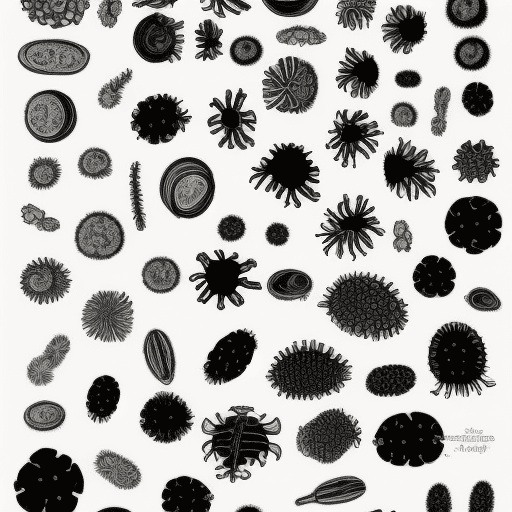What are the characteristics of life?
There are many things that we still don’t understand about life.
What is its purpose?
How did it first come to be?
These are some of the questions that scientists and researchers have been trying to answer for years.
Let’s dive in and explore some of the latest theories about what life is and how it exists.

The characteristics of life are that it is composed of cells, it can grow and reproduce, it extracts energy from the environment, and it responds to its environment.
Explain It To A Child
Life consists of cells, can grow and reproduce, gets energy from the environment, and responds to its surroundings.
All living things on Earth share these same basic characteristics. Cells are the smallest unit of life that can replicate independently, meaning that they can grow and divide to form new cells.
All living things extract energy from their environment in order to grow and reproduce. And all living things respond to their environment by altering their behavior in some way.
For example, plants turn towards the sun to get more sunlight; animals flee or fight when threatened.
What are the characteristics of life?
The characteristics of life are many and varied, but there are certain properties that all living things share.

- First and foremost, living things are distinguished from non-living things by their ability to grow and reproduce.
- All living things undergo some form of change over time, whether it is growth, development, or merely the passing of time.
- All living things also require some form of energy in order to maintain their biological functions.
- This energy can come from the sun in the form of photosynthesis, from food sources in the form of nutrition, or from internal chemical reactions.
Finally, all living things are composed of cells, which are the basic units of life. These cells are capable of dividing and replicating, and they carry out the essential functions of life.
The characteristics of life are that it is composed of cells
The most basic unit of life is the cell.
All living things are made up of cells, which are the building blocks of life.
Cells come in a variety of shapes and sizes, but they all have some basic features in common.

- First, all cells are enclosed by a plasma membrane, which helps to protect the cell and regulate what goes in and out.
- Second, all cells contain DNA, which contains the instructions for everything the cell needs to do.
- Third, cells need energy to function, and this energy comes from ATP. Finally, all cells reproduce through a process called mitosis.
These are just some of the basic characteristics of life, but they are essential for all living things.
The characteristics of life are that it can grow and reproduce
All living things have certain characteristics in common.

They can all grow and reproduce.
- They are all composed of cells, which are the basic units of life.And they all need the energy to carry out their various functions.
- However, not all organisms share these characteristics to the same degree.
For example, viruses are not considered truly alive because they cannot reproduce on their own.
Instead, they must hijack the machinery of other cells in order to make copies of themselves.
In contrast, plants and animals are able to carry out all of the essential functions of life without any outside assistance. As a result, they are classified as true living things.
Understanding the characteristics of life is essential for understanding the diversity of the natural world.
The characteristics of life that extract energy from the environment
All living things need some source of energy to fuel their metabolism.
For most organisms, this means extracting energy from the environment in the form of food.
But there are other sources of energy that can be used by organisms to power their life processes. Some bacteria, for example, can extract energy from inorganic compounds such as iron or sulfate.
Others are able to harness the energy of light, either directly through photosynthesis or indirectly through a process known as chemosynthesis.
These forms of alternative energy allow some organisms to thrive in environments where other life forms could not survive.
In this way, the ability to extract energy from the environment is one of the most important characteristics of life.
The characteristics of life that respond to its environment
All organisms exhibit some level of response to their environment.
- For example, plants grow towards light and away from darkness.
- Animals may migrate to find food or shelter.
- Even single-celled bacteria can move towards or away from chemicals in their surroundings.
- This ability to detect and respond to changes in the environment is one of the most basic characteristics of life.
- In some cases, an organism’s response to its environment is a matter of survival. For example, plants that cannot grow toward light will quickly die.
Animals that cannot find food will starve.
Organisms that cannot avoid predators will be eaten. In other cases, the consequences of an inappropriate response may not be so severe.
For example, a plant that grows towards the light but does not receive enough sunlight may not thrive, but it will not die.
responses to the environment can be classified as either internal or external. Internal responses are controlled by the organism’s nervous system and do not require any external stimuli.
For example, shivering is an internal response to cold temperatures. External responses are controlled by sensory organs and do require external stimuli.
For example, moving toward the light is an external response to light intensity.
Organisms can also exhibit different levels of responsiveness to their environment. Some organisms, such as plants, respond slowly to changes in their surroundings.
Others, such as many animals, have sophisticated nervous systems that allow them to rapidly detect and respond to even small changes in their environment.
The level of responsiveness that an organism exhibits is often related to its need for survival; those organisms with the greatest need for responsive behaviors tend to be the most responsive.
Together, these characteristics define what it means to be alive.
Article Sources
Jacks of Science sources the most authoritative, trustworthy, and highly recognized institutions for our article research. Learn more about our Editorial Teams process and diligence in verifying the accuracy of every article we publish.
